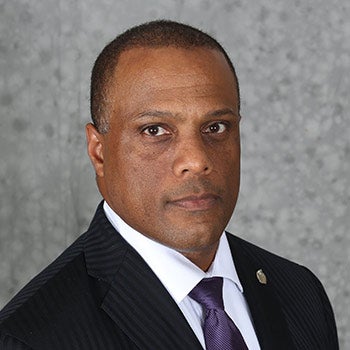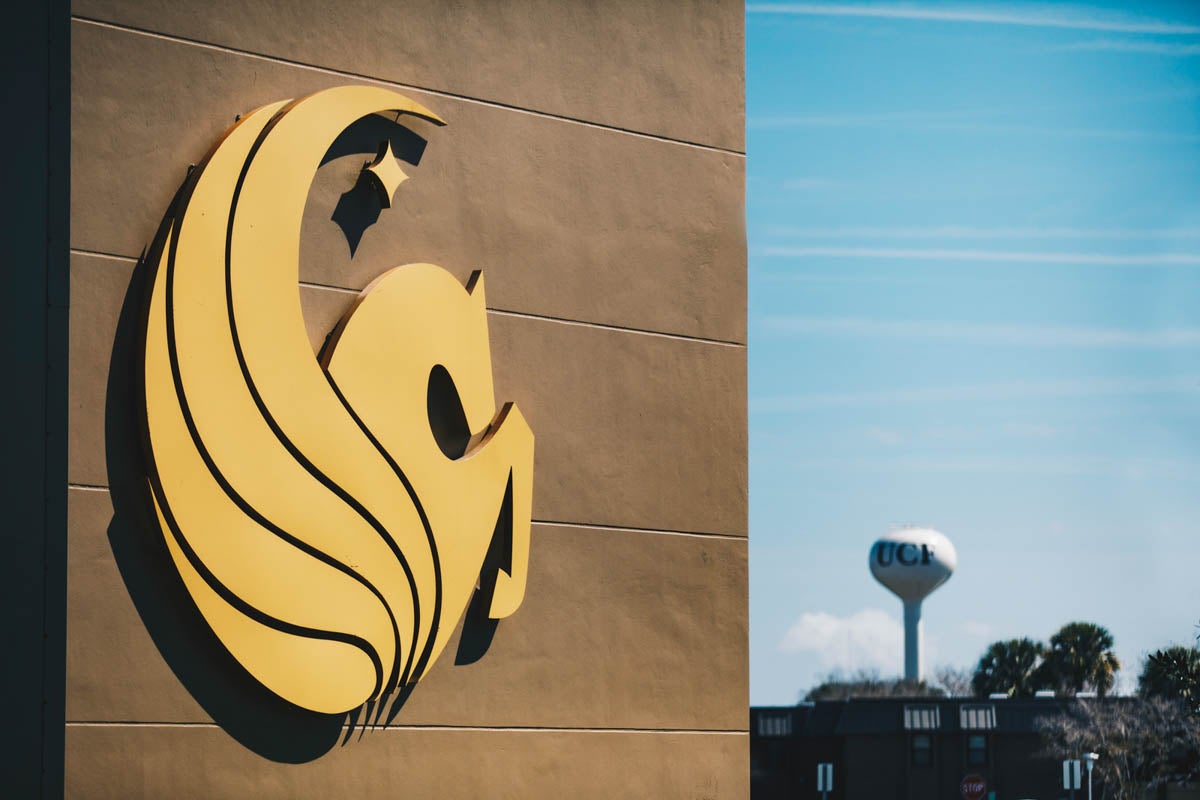The past year has brought great change for UCF faculty and staff. We continued to navigate the challenges of a global pandemic and successfully brought more students back to campus, and we also began the transformation and reimagination of the way we align our people to support our administrative functions, improve business processes and deploy modern technology (Workday and Adaptive Planning) through the Knight Vision program. As the end of 2021 quickly approaches, many aspects of the program are “SET” in motion…quite literally.

December starts my 12th month since I joined the Knight Nation family, and during this time, I have purposely met with as many campus constituents as possible. Those meetings I dubbed my “4-year-old tours.” Simply put, I met with deans, vice presidents and directors in their spaces. The single objective was to understand their operations and business models, and how each impacts the overall vision of getting to “One UCF.” It was truly time well spent.
Over the past several weeks we have announced several initiatives that further the impact of Knight Vision on our campus. In this update, I would like to share my responses to a question that was posed to me at least twice about this project. The question is in two parts: “Mr. Hector, why do we have to do Knight Vision and all its related technologies, and why try to do all of them now?”
One of Dr. Cartwright’s goals for UCF is to have efficient and effective financial and administrative management and operations. Knight Vision focuses squarely on that goal.
Workday
One of the hallmarks of any Enterprise Resource Planning (ERP) system is to allow for the timely and accurate recording, summarization and reporting of financial information that takes into account all the various business units within an organization. We currently are utilizing the PeopleSoft ERP system, but as we have learned over the years, it does not allow for us to do the three critical items noted above. Much of our work is predicated upon our siloed operational structures between our 13 colleges, various divisions, other units outside the academy and sponsored research. This has resulted in several shadow systems being managed through Microsoft Excel, and other data management software that are not germane to the PeopleSoft system. They require a tremendous amount of manual effort by a plethora of individuals to complete tasks that a modern, well-implemented ERP system would do as a matter of daily functions.
The inability of moving with alacrity around inputting and reporting our data causes much of what we do to go through “fits and starts.” As noted during the COVID pandemic, our current posture can significantly add to duplicative work, redoing work between the colleges and the central administration, and keeping alive manual processes that peers jettisoned years ago. I sometimes use the expression that we must get from the “Flintstones to the Jetsons” when it comes to our financial and administrative platforms, such that they keep pace with our stellar academic, research and public service portfolios. We must find ways to reduce the administrative burden on our academic enterprise such that the incredible work of our faculty and researchers can lift the university to higher heights. That is why we need this Workday system implemented.
However, I move posthaste as well to say that Workday is not a panacea for all the various nuances to our operations. No ERP conversion that I am aware of has been 100% error free. We will learn quite a bit after we “go live” in July 2022. That is normal for a conversion effort of this size and scale. For this reason, we have been engaging the campus in a host of ways to ensure that we remove three words from everyone’s vocabulary (if possible). Those three words are “I didn’t know.” Our work continues on that front.
Adaptive Planning
Like the challenges with the ERP system, we also have a manual process for our budgeting process. In our current budget model, we do not “budget” for Educational and General (E&G) revenues at the university, although it is our largest source of revenues. Given our growth and rise, we have a budget model that deployed funding on an incremental basis to units that experienced greater student enrollment and by extension more growth in student credit hours (SCH). In other words, in our colleges, our deans budgeted to use the funds that were distributed to them year after year by the central administration. The same is true for the nonacademic units. That process worked to keep our operations moving, but it did not have the transparency into how, and more importantly, where the university should be investing to manage our growth.
To that end, we now have critical functions that need an infusion of resources to undergird the growth in enrollment and research activities. Most notably, our Information Technology and Facilities areas need such investments to “catch up” to our growing needs for IT resources and first-class facilities. With that realization, we are putting in place a new budgeting tool called Adaptive Planning. We are working through that implementation which will be iterative in nature because of the complexity of our current budget and ERP set up.
As an example, we do not utilize traditional cost centers to capture budgets and expenditures in a rollup fashion. That has allowed us to have over 9,000 departmental and project accounts within our system to carry out the financial management of the university. With Adaptive Planning and Workday combined, we are seeking to have that number limited to between 600 to 1,000. That will mean colleges, units and divisions will be using more modern ways to tag transactions, utilizing cost centers that will inform budgets within the correct “color of money” (funding streams), and building an expenditure profile that is tied to the strategic plan of the university. Like the Workday implementation, Adaptive Planning it is not a panacea, but it is the right path to embark upon for future stability in our financial and administrative management.
Service Enhancement Transformation (SET)
SET will reimagine and improve HR and Finance processes, transforming how services are provided throughout the university and aligning our organizational structure to best meet departments’ needs. SET is critically tied to the Knight Vision Workday implementation, which explains why it is occurring at the same time as Knight Vision. The analogy I use while speaking to groups on campus is that we are purchasing two new cars in Workday and Adaptive Planning, and we need to sit in them and drive, versus pushing like we currently are with the PeopleSoft system augmented by spreadsheets, manual workarounds, and the knowledge and memory of individuals. SET opens the door for us to enter the car to drive.
SET is carefully designed as a “shared services” approach to our business processes that attempts to limit duplication of effort and work product, enhance our collective purchasing power of the university as a whole to take advantage of strategic sourcing and volume purchasing, and enhance expertise in key functions to meet compliance and other state, federal and local requirements.
We realize that while this change will bring many exciting opportunities for our people and institution, it also can also create a feeling of uncertainty for some employees. Please know we value each and every one of you and the work you do to make UCF the leading institution that it is; we believe this transition will be an enhanced experience for all our outstanding staff. It will also allow for our physical resources (Workday and Adaptive Planning) to match and enhance the human resources (SET) here at the university.
On Dec. 10, we held our last Knight Vision Forum, and we were pleased by all the questions and engagement from attendees. We continue to encourage everyone to get involved. In future monthly updates from me, we will provide milestone accomplishments, and be another vehicle to keep this project in front of everyone. Below are some links to various communications resources that you can review:
- Workforce Transition Plan (Workforce Transition Plan)
- Transition Teams (Transition teams)
- SET Business Case (SET Business Case)
- Knight Vision Web Pages (Knight Vision SET webpages)
- The SET Gazette (The SET Gazette)
I close with answering the second part of the question. We are doing all of these now because we are at a seminal moment in UCF’s history. We are making these changes now to allow for the university to pivot to the exciting times that are ahead of us. We are embarking on the Big 12 conference change that will increase our visibility and gravitas across the nation. We are reshaping our operations such that we have the tools to assist with data-driven decisions that will undergird our future successes because we can be nimble, effective, and efficient in getting timely information to key decision-makers. We will have centers of excellence that will not only provide good customer service to our faculty, students and staff, but will also create growth opportunities for current and future employees. We are making these changes now to provide a firm foundation from which we will launch into the future that is destined for us as “One UCF.”
Go Knights, Charge On!




